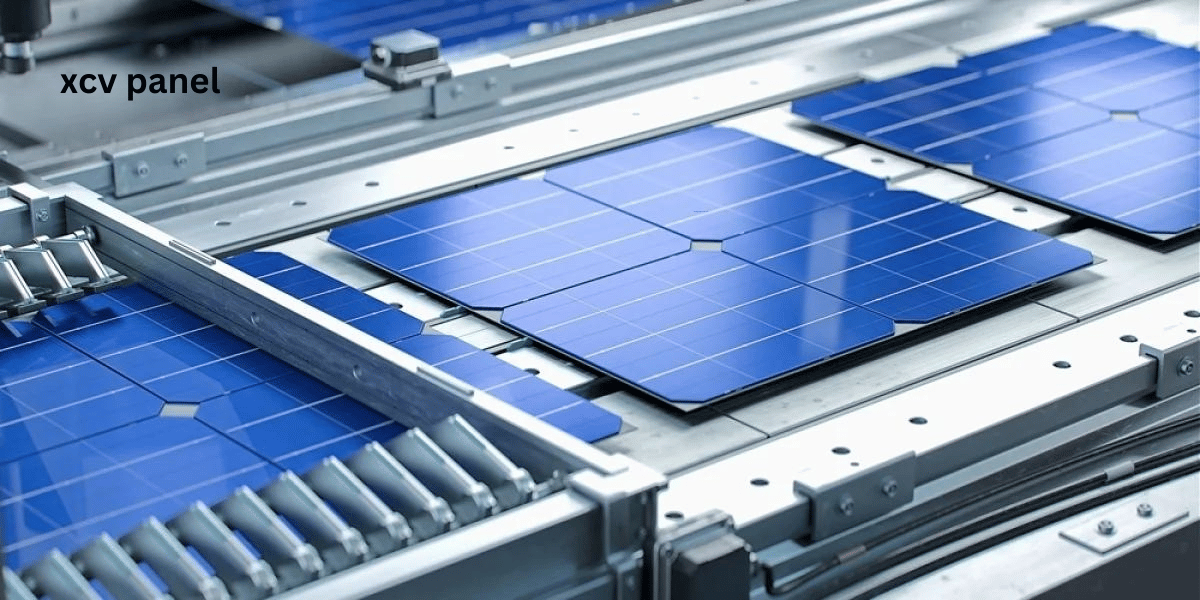Ever wondered how to get the most out of your XCV panel? We’ve got you covered. This comprehensive guide will walk you through everything you need to know about using and maintaining your XCV panel like a pro. You’ll be up and running in no time.
XCV panels can seem complicated at first, but we promise this is easier than assembling IKEA furniture. We’ll start from the very beginning and explain what each component does, how it works, and most importantly, how it benefits you. You’ll learn insider tips and tricks to boost performance, increase efficiency, and get more life out of your XCV panel.
Whether you’re a newbie or an experienced user looking to level up your skills, this guide has everything you need. In about 10 minutes, you’ll go from XCV panel amateur to expert. So grab your favorite beverage, sit back, and prepare to become an XCV master. Let’s dive in!
What Is XCV Panel?
The XCV panel is a type of control panel used in industrial automation and process control systems. It contains analog and digital I/O modules that connect field devices like sensors, actuators, and controllers.
The XCV panel typically comes in a metal enclosure and has a backplane that all the I/O modules plug into. It provides power to the modules and handles communication between them. The backplane uses a bus structure, so all modules can talk to each other.
You’ll find XCV panels in manufacturing plants, refineries, and anywhere that needs to monitor and control equipment. They provide a centralized location to wire all your field instruments and send their signals to a programmable logic controller (PLC) or distributed control system (DCS).
XCV stands for “Expanded Control and Visualization.” These panels give you a flexible, scalable way to expand your control system by adding more I/O modules. You can start with just a few and increase to hundreds of I/O points. Mix and match digital, analog, temperature, and other signal types.
An XCV panel offers a simple yet robust infrastructure for your monitoring and control applications. With the variety of I/O modules available, you can build a customized solution to meet the needs of your industrial process. XCV panels provide an easy-to-use and cost-effective approach to expanding your automation system.
Key Features and Capabilities of XCV Panel
The XCV panel comes with some killer features that set it apart.
Responsive Touchscreen
The 12-inch touchscreen provides an intuitive interface to control the XCV panel. It’s responsive and lag-free, letting you quickly navigate settings and options with the tap of a finger. The touchscreen also allows for multi-finger gestures like swiping and pinching to zoom.
Powerful Processor
At the heart of the XCV panel is a quad-core processor and 8GB of RAM, giving it plenty of power to run multiple programs simultaneously without slowing down. Whether you’re browsing the web, streaming media, or using graphic design software, the XCV panel can handle it with ease.
Storage Galore
With 512GB of solid-state storage, you’ll have ample room for all your files, photos, videos, and more. The SSD also means faster boot and load times compared to a traditional hard disk drive. If that’s not enough, the XCV panel supports external storage drives via its USB and Thunderbolt ports.
Advanced Security
To keep your data and the XCV panel itself secure, it includes both a fingerprint reader and infrared camera for facial recognition. These advanced biometric security options provide an added layer of protection that is far more secure than a simple password.
Connectivity
The XCV panel comes loaded with ports, including USB Type-A, USB Type-C, Thunderbolt, HDMI, and an SD card slot. It also offers the latest wireless connectivity in Wi-Fi 6 and Bluetooth 5.1. With all these options, you’ll have no problem connecting accessories, external displays, and other devices.
Between the touchscreen, powerful components, ample storage, security features, and extensive connectivity, the XCV panel has everything you need for work and play. This versatile device can function as a tablet, laptop, and even desktop replacement thanks to its 2-in-1 design and wealth of capabilities.
How to Install and Configure XCV Panel
To get your XCV panel up and running, you’ll need to install some required software and configure a few settings.
Download the XCV App
The XCV panel won’t function without the companion app, available for download on your panel provider’s website. Install the app on your computer or mobile device. The app allows you to monitor your panel, view live data, and adjust settings remotely.
Once the app is installed, you’re ready to power on your XCV panel for the first time. Flip the switch in your fuse box to provide power to the panel. The panel will automatically start up and run through its initialization sequence. This should only take a few minutes.
Connect to Your Wi-Fi
In the XCV app, select ‘Add New Device’. Follow the on-screen prompts to connect your XCV panel to your Wi-Fi network. You’ll need your Wi-Fi password to complete this step. Connecting the panel to Wi-Fi allows for remote monitoring and control through the app.
Set Up Monitoring and Alerts
One of the key benefits of the XCV panel is the ability to monitor energy usage and costs in real time. In the app, open the ‘Monitoring’ tab. Here you can configure high-usage alerts to notify you if your home is consuming more energy than usual. You can also set billing cycle alerts so you receive an alert when your utility bill is estimated to exceed a set budget.
Turning on the ‘Monthly Summary’ feature will provide you with a detailed overview of your home’s energy usage and cost each month. This can help identify inefficiencies and find ways to reduce waste.
The puts you in full control of your home’s energy usage. With some basic configuration, you’ll be leveraging its many benefits in no time. Let us know if you have any other questions!
XCV Panel Use Cases and Applications
The XCV panel has several useful applications across various industries. Here are some of the major use cases and how the XCV panel can be implemented:
Automation and Control Systems
The XCV panel is ideal for automation and control applications where reliable and precise control is needed. Its modular design makes it easy to scale up by adding more input and output modules to control larger systems. The XCV panel can be used to:
- Monitor and control industrial equipment like conveyor systems, batching plants, and bottling lines.
- Automate building functions such as lighting, HVAC, security, and fire alarms.
- Activate and monitor pumps, valves, motors, and sensors.
Data Acquisition
With its variety of analog and digital I/O modules, the XCV panel is well-suited for data acquisition and measurement tasks. It can interface with many types of sensors and transducers to monitor:
- Temperature, pressure, flow, pH, and other process variables.
- Machine health and performance using vibration, ultrasonic, and motor current analysis.
- Environmental conditions like humidity, wind speed, solar radiation, and pollutants.
Safety Systems
The fast scan times, signal processing capabilities, and modular redundancy make it ideal for safety-critical applications like:
- Emergency shutdown systems quickly cut power during hazardous events.
- Fire and gas monitoring to detect leaks or flames and trigger alarms.
- Perimeter security systems to monitor fences, and gates, and detect intrusions.
With robust components and software tools for logic configuration and simulation, the XCV panel provides a flexible and reliable solution for safety instrumented systems up to SIL 2.
In summary, the XCV panel has a lot to offer for industrial and commercial automation, control and monitoring. With the variety of I/O and software options available, the possibilities for applying the XCV panel are vast.
Troubleshooting Common XCV Panel Issues
Troubleshooting issues with your XCV panel doesn’t have to be frustrating if you know what to look for. Here are some of the most common problems and how to solve them.
Error Codes
If your XCV panel is displaying an error code, check your owner’s manual for details on what it means and how to resolve it. Often, it indicates a quick fix like replacing a filter or resetting a connection. Don’t ignore error codes, as they can point to more serious problems if left unaddressed.
Power Problems
Is your XCV panel not turning on at all? First, ensure it’s properly plugged in and the outlet is functional. If it’s plugged in but still won’t start up, you may need to replace the power cable or have an electrician check for issues with the outlet or wiring.
If the panel turns on but then shuts off after a few seconds, it could indicate an overheating issue. Make sure the vents and fans are clear of dust and not blocked, and consider relocating the panel away from heat sources like sunlight or heating vents. It’s also a good idea to give the panel time to cool down completely before turning it back on.
Connectivity Issues
Can’t connect your XCV panel to WiFi or other devices? Double-check that your WiFi password is entered correctly and your network is functioning properly. You may need to reset your router or modem. Also, verify that all cables connecting the panel to other equipment are securely plugged in at both ends and not damaged.
Resetting the panel to factory default settings can often resolve software-related connectivity problems. This will erase all your settings and preferences, so only do this as a last resort. You may need to re-enter account logins and set up the panel from scratch.
With some troubleshooting, you’ll likely be able to diagnose and fix common issues with your XCV panel. However, if problems persist or you continue experiencing error codes, it’s best to contact the panel manufacturer’s customer support for guidance. They can walk you through more advanced troubleshooting or may need to service the panel.
FAQs:
Have some questions about your XCV panel? Here are some of the most frequently asked ones:
How long will my XCV panel last?
Your XCV panel should last 15-20 years with proper care and maintenance. The panel itself is very durable, but the inverter that converts the electricity from DC to AC power may need replacement after 10-15 years. The good news is that inverter technology is always improving, so a new one can increase your system’s efficiency.
How much energy can I expect my XCV panel to produce?
The amount of energy produced depends on several factors, including:
- Panel wattage and number of panels installed
- Available sunlight in your area
- Angle and direction panels are facing
As a general rule of thumb, you can expect 3-4 hours of peak sunlight per day to generate about 1 kWh of electricity per 100 watts of panel capacity. So a typical 3 kW system with full sun exposure may produce 9-12 kWh per day—enough for most homes.
Do XCV panels work in cold weather?
XCV panels are designed to operate in a wide range of temperatures, from very cold to very hot. Their performance may decrease slightly in extreme heat or cold, but they will still produce power. The panels themselves actually work better in cooler temps, but the inverter and other components are more efficient in warmer weather. As long as the panels are properly angled to shed snow, they should operate year-round for most areas.
Will my roof support the weight of XCV panels?
XCV panels are relatively lightweight, about 40-50 lbs per panel. Most residential roofs can support the distributed weight of a full solar panel system without issue. However, if your roof is older or in poor condition, it’s a good idea to have it evaluated by a structural engineer before installation. They can assess if any reinforcement is needed to ensure your roof’s integrity and safety. Better safe than sorry!
Conclusion
So there you have it, the complete guide to using XCV panel for your next project. Whether you’re a seasoned pro or just getting started, this versatile material can help take your work to the next level. With some basic tools and techniques, you’ll be creating professional results in no time. What are you waiting for? Get out there and start making something amazing. The possibilities are endless, so unleash your creativity and see what you can come up with. And of course, be sure to share your XCV panel creations – we’d love to see what you can do! Keep learning, keep practicing, and most of all, have fun with it. You’ve got this!
Email id contact: thedigitaljournalss@gmail.com


